The design of cities appears to be on the cusp of a revolution in real-time computation. The Architecture, Engineering and Construction (AEC) industry is one of the most enthusiastic adopters of commercial “game engine” technologies, the software platforms on which contemporary videogames are built. Virtual Reality (VR) interfaces, easily integrated into game engines, are promising to revolutionize architectural visualization by providing a one-to-one connection to unbuilt buildings, where producing photorealistic depictions of marble countertops and penthouse vistas become trivial. At the same time, the real-time computation afforded by game engines allows for them to be easily adopted as tools for analyzing building performance in combination with 3D representations of space, or to be integrated with sensors to build real-time models of cities. In response, the two largest game engine developers, Epic Games and Unity Technologies, have developed architecture-specific tools promising easy connection to BIM software, VR and AR interfaces.
While these developments are interesting and commercially profitable, consigning game engine software to the arbitration of systems information, or the glossy but convincing depiction of unbuilt penthouse apartments, both reinforces the existing power structures of the construction industry and prizes these tools away from their original purpose—the creation of intense, paradoxical and impossible spaces for videogames. As Ian Bogost argues, game engines establish common ontologies between the different worlds they underpin, regulating everything from physics to the rendering of geometry and the interfaces by which it is experienced.1 The Unreal engine powers games as diverse as the third-person shooter Fortnite, the Japanese role-playing game Final Fantasy VII Remake and online pirate ship simulator Sea of Thieves, but they are all connected at the level of the games’ deeper logic. Each game world has a structural similarity and yet applies it in a divergent way, from recreating rolling oceans to a superdense metropolis. Meanwhile, a simple search for “Unreal ArchViz” on Google produces a vast number of images that display highly similar traits: white walls, expensive stones, blond timber, and artfully-placed rugs (fig. 1). These images, far from the heterogeneous application of the game engine, smooth it into a narrow conception of what interactive virtual architectures could be, trapping them in the everywhere-nowhere aesthetic of “airspace,” the world of chain coffee shops and Airbnb listings.2 While the aesthetic form of the videogame has been variously described as promoting “failure”3, “disunity”4, and “uncertainty”5, such tension is lost once the technology comes to meet the aspirational glossy-pamphlet aesthetic of architectural visualizations.

Beyond the use of the engines themselves, architecture is also challenged by the complex reality of game worlds and the spaces and cultures associated with them. Games blur the strictly drawn boundaries between virtual space and the “real-world,” while also suggesting new fields for architects and urbanists to design in. The popular game League of Legends by Riot Games is arguably the leading and most visible eSports title. As such, the game has become tied into the existing architecture infrastructure of live sporting events, with architects exploring the emerging possibilities of these new events and the venues they require.6 League of Legends has also produced other cultural forms that tap into different industries to leverage the power of the game in hybridized cultural contexts. K/DA is a virtual pop group combining digital avatars from the game (and purchasable digital assets) with Korean K-pop stars, melding games with another highly developed culture industry. The group’s augmented reality performances, in venues such as Herzog and de Meuron’s Bird’s Nest stadium, are physically based, yet designed precisely around the mechanisms by which game worlds are transmitted widely, platforms such as Twitch and YouTube. The conflation of real-world performers with virtual counterparts, including the rise of “VTubers” (streamers who use digital, typically anime, avatars) provides a context where people’s identities, and the spaces they inhabit, can seemingly move fluidly between the virtual and physical without impediment.
At the same time, controversies such as game super-developer Blizzard’s treatment of pro-Hong Kong eSports players (which drew censure from U.S. Congress members) demonstrate that sovereign and political boundaries can still be strongly asserted even in ostensibly borderless and fictional game worlds.7 The emergence of cryptocurrency-integrated game spaces, such as Cryptovoxels and Decentraland (both powered by the Ethereum blockchain), suggests new forms of collective and decentralized worldbuilding that challenge the economic models of real cities. They also hint at the potential for architectural practice as a profitable field within virtual environments. Yet these worlds are designed around a regimented grid, with parcels of land divided into blocks (traded as non-fungible tokens, or NFTs), often taking ubiquitous economic and urban forms, which are applied in ways that appear relatively normative. Of course, the cryptocurrency market is notoriously volatile, and currencies such as Dogecoin, designed in the image of a popular meme depicting a Shiba Inu dog, have shuttled back and forth between a joke and an investment, sometimes at the whim of a tweet by Elon Musk.8 While a crypto-integrated and all-encompassing “metaverse,” characterized by diminished boundaries between the virtual and reality, might be the future form of a videogame space integrated with the city, it might also end up being founded on a meme.9
In this context, architecture and urbanism have a significant role to play in shaping these new territories. The metropolis-scale of games like SimCity or Cities: Skylines might be considered models for a total, virtual city, but these often exist on too large a scale for experimental speculation. The God’s eye view of the game traps the player in the overview, while the logics of the game privilege a compartmentalized, zoned American-style urbanism that is inappropriate for other cultural contexts.10 While these games frame the city as something to be “solved,” architecture and urbanism can draw upon centuries of experience in planning urban space and responding to contextual conditions. If the boundaries between our virtual spaces and reality can produce new forms of entanglement, then architecture has an array of critical tools and discourse at its disposal that can also affect the future of virtual world design.
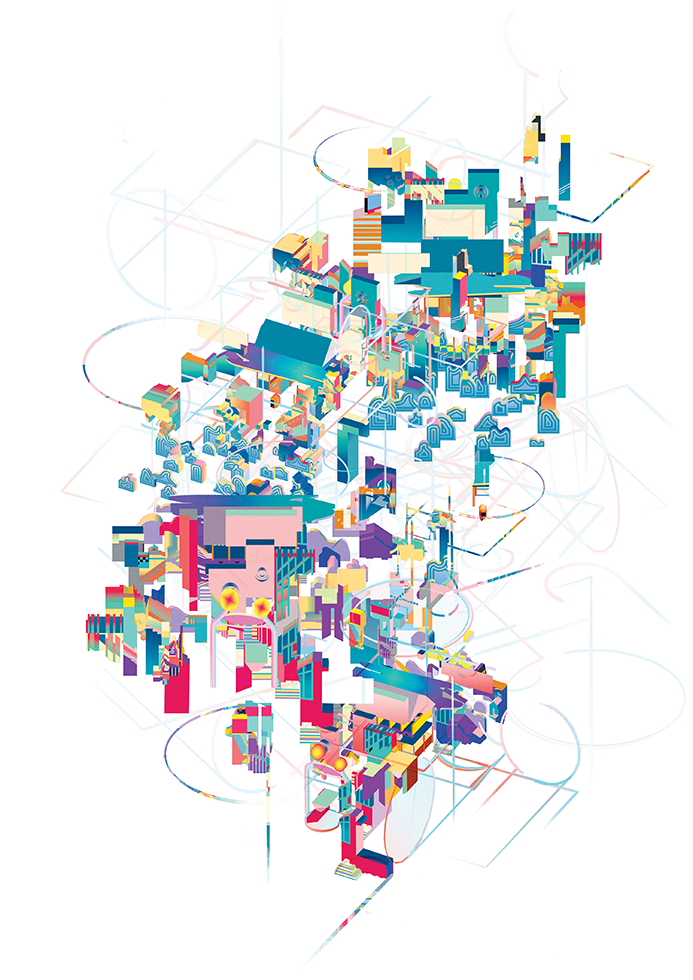
This potential underpins the work we produce in our Videogame Urbanism studio, based at the Bartlett School of Architecture, UCL. Here we use game technologies to explore new ways of engaging and interfacing with cities, to imagine and speculate on new types of city, and to develop new forms of architectural practice operating between the virtual and physical. This also involves questioning the way cities are represented and understood in games themselves. Projects are typically developed using a third-party game engine software (Unity), but each game involves custom coding and extensions to the engine through different plugins, leveraging the interoperability of game engine software to establish design environments that can vary significantly while sharing common systems. Our games target specific contextual urban conditions and extrapolate out from them, using game mechanics and interactivity as a way of revealing new knowledge about cities.
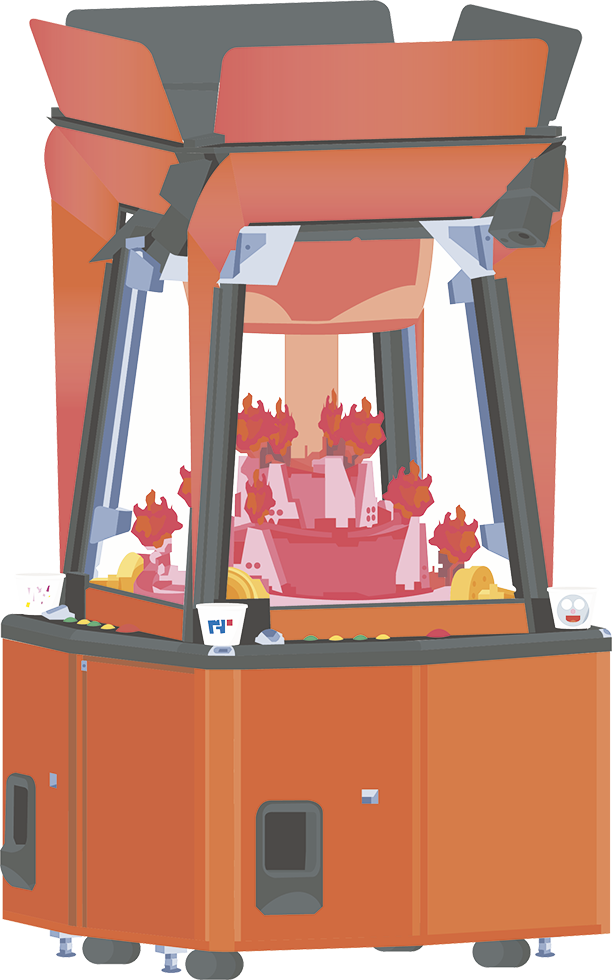
For example, in Kintsugi City (Yu Qi, Ziyi Zhang, 2019), our students created an alternative reading of Tokyo through the spatial protocols of Japanese art. By assembling fragmented objects through digital kintsugi (the art of repairing broken pottery with gold leaf), a series of views through the city could be composed (fig. 2). The city is recreated as hundreds of spatial fragments in constant communication with one another, to be manipulated by the player and reconciled through the flatness of the virtual camera. The game uses Eastern principles of art to reframe the city in contrast to the Western desire for an ever more complex digital mapping of the world, as evidenced by the vast infrastructure of Google Earth or Bing Maps. Rather than the continuous surface of the LiDAR-scanned mesh, these fragments foreground what Ian Bogost calls the “confluence of physical, virtual, computational, and non-computational stuffs” underpinning the algorithmic systems that represent our contemporary cities.11
As Bogost argues, such algorithms are increasingly being exalted as singular answers to complex real-world problems, and the contemporary drive towards “Smart City” technologies promises super-efficient futures where the friction of urban living will be smoothed over in the service of capital, and citizens become data sources to be monitored by corporations. Our 2016 project Tokyo Backup City imagined an alternative future for city-level computation that embraced the playful integration of gaming technologies. The project was drawn from a real plan proposed in 2011 for a “backup” of Tokyo, to protect essential governmental infrastructure from collapse in the event of a natural disaster hitting the capital. The “NEMIC” plan was to be funded by American-style gambling resorts, only recently (and controversially) approved in Japan. In contrast, we built on research into “medal games,” arcade lottery games common in Japan, which are a form of super-sized pachinko machine—where tokens are funneled into elaborate game cabinets in the hope of achieving a random, and non-monetary, prize (fig. 3).12
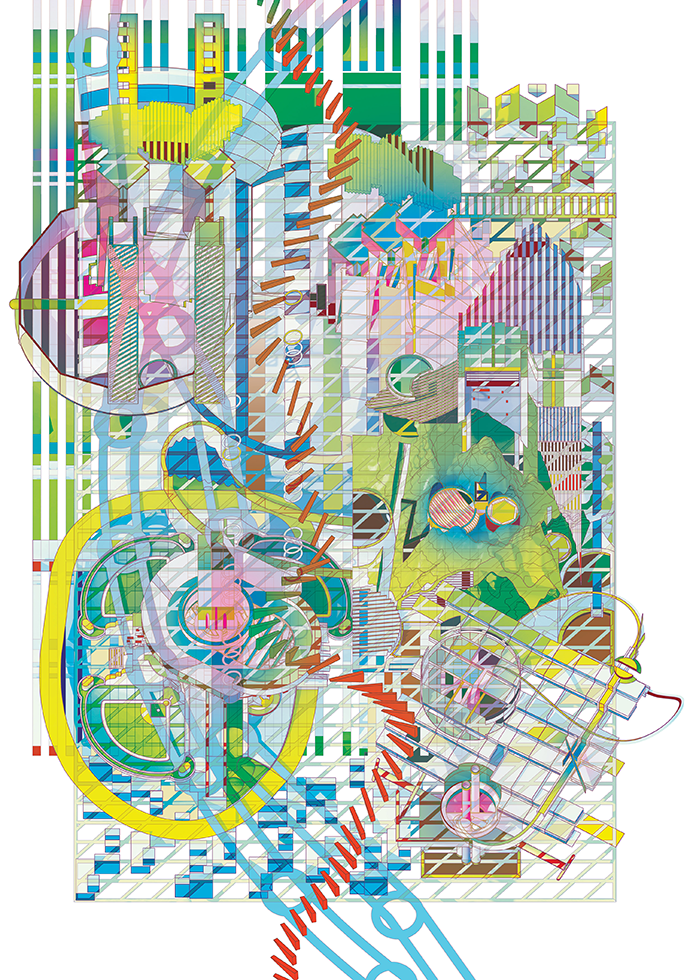
These games fit into Japan’s curious framework of legal gambling pursuits, many of which involve the anonymization and randomization of participants. By extrapolating these gaming technologies to the scale of the city, our project would gamify the entire urban environment, proposing to generate economic income through the integration of citizens into a giant urban lottery (fig. 4). In the same way that medal games hold the player’s attention through exuberant displays, our design would intensify the city through the integration of game logic. This could be smart, or it could be stupid, but it would always be playful. This ties the project to the long lineage of game-like urban speculations, particularly those emerging in the 1960s and 1970s, such as Archizoom’s No-Stop City or Constant’s New Babylon, where megastructures would enable all manner of creative and gameful experiences for people. In many ways, we can see such projects as the precursors of videogame spaces, where the megastructure becomes a metaphor, and thus what Jesper Juul would call the “immaterial structure” of a game.13
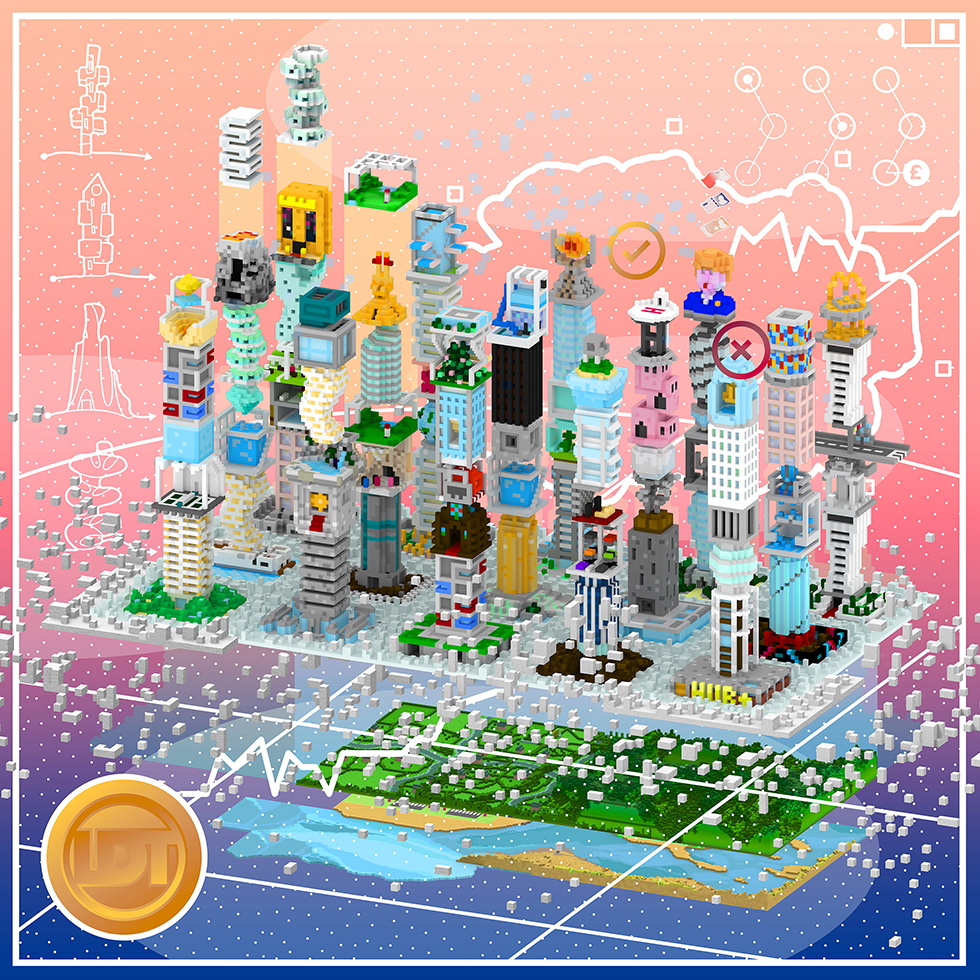
In our work we have also examined the immaterial structure of architectural representation and its relationship to the building of cities, as a counterpoint to the proliferation of “ArchViz” imagery developed through game engines. The London Developers Toolkit 2.0 (2020) deals with gaming in relation to urban power structures established through the power of imagery (fig. 5). In the game the player is responsible for building and then advertising a high-rise luxury development. The game has the loose appearance of a “city-builder,” but the mechanisms speak more specifically about the architectural imagery that accompanies flows of capital in the city. The player notionally operates as an architect for a pair of property developers, undertaking several tasks involving the gesture recognition of “napkin sketches” and performing parametric calculations. Following this, a “poor Photoshop” program becomes accessible from which players can design their own advertising images for their tower. The game is connected directly to a printer and a Twitter bot, which aggregates and promotes imagery from the game, connecting the virtual world to social media. Designed through “Minecraft-style” voxel modeling, the game has a blocky and childlike look. This cuteness has an agency of its own, which is used to challenge “from a position of playful vulnerability” and “lightheartedly probe[s] the established ways in which we invoke power.”14
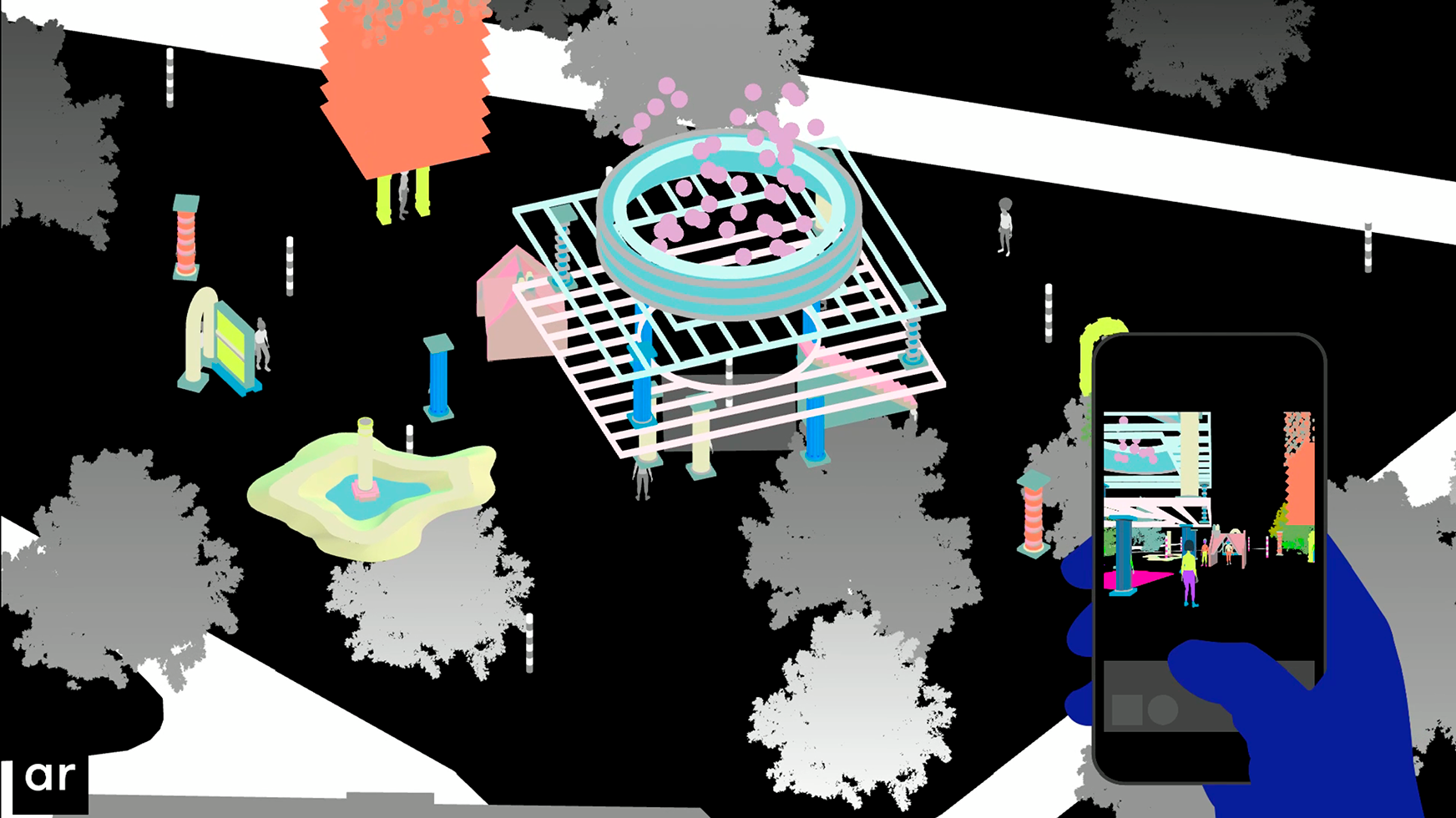
Approaching architectural components in this way reinforces their “gameness” and reiterates Bogost’s claims about games and simulations as caricatures of reality which, as Ernst Gombrich argues, in “showing more of the essential, [are] truer than reality itself.”15 While the imagery created in the game is intentionally ironic and grotesque in its outlook, it is only one step away from the truth of vast swathes of London—such as the Nine Elms redevelopment, built on an uneasy foundation of architectural chutzpah and PR spin.16 The Toolkit probes the relationship between design software, image-making, and investment. As a game, it also provides a gentle space for the exploration of failure, much like Curbed’s regular “Rendering/Reality” features around a decade ago, which compared the original glossy renderings of soaring buildings to their lumpen, built reality.17
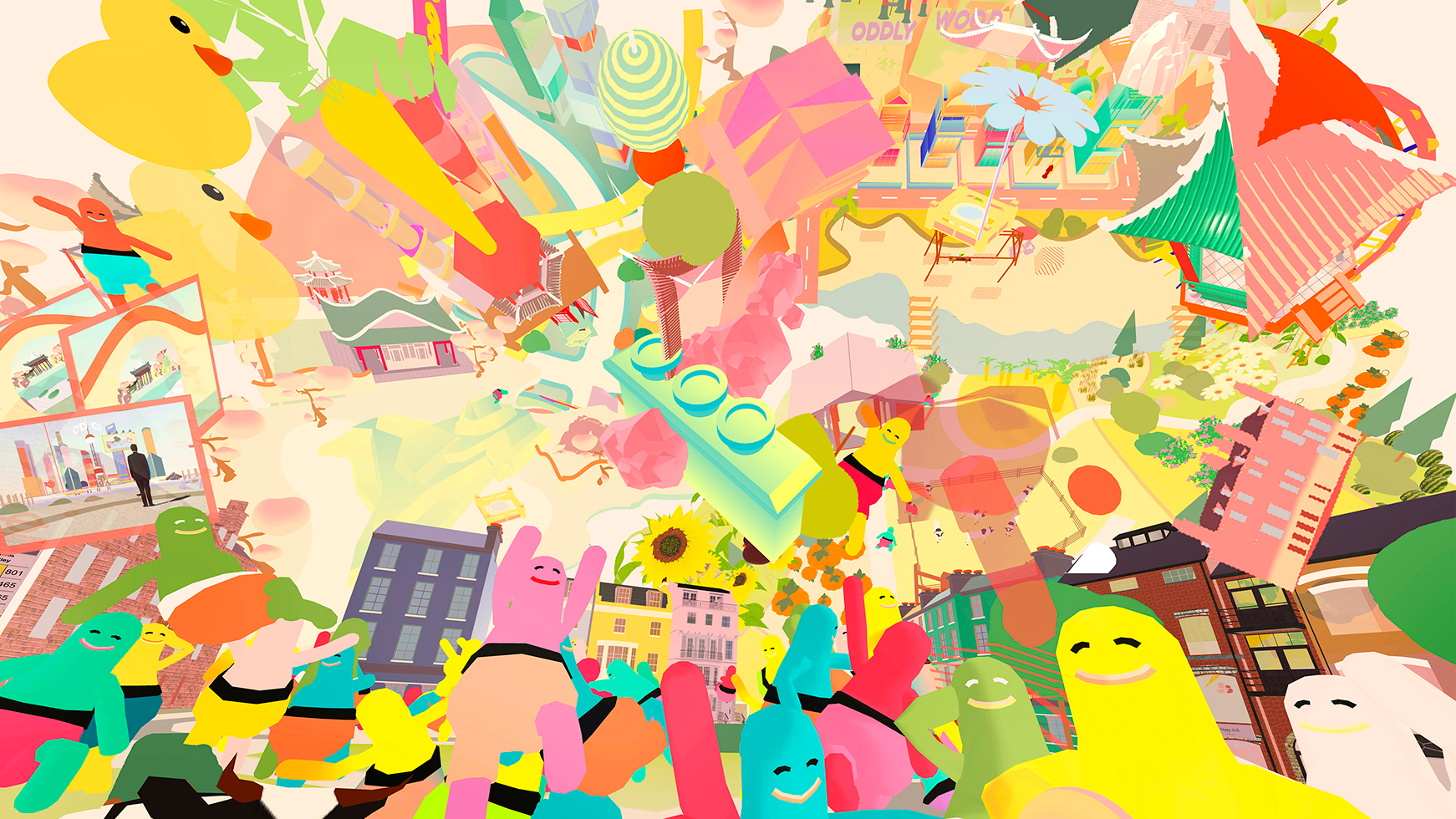
Due to advances in game engine technologies, what constitutes a built reality is increasingly under question. Our project Everyone is Architecture proposes a cooperative spatial game, using geolocational positioning and augmented reality to create a system for public participation. Inspired by Hans Hollein’s famous declaration that “Alles ist Architektur,” the game challenges what it means to construct architecture today, offering a new building environment that brings people together through collaborative design.18 Hollein had argued that technology would widen the discipline so that everybody would become architects. By extending this into AR we propose that everybody would become architecture, embodying architectural elements as avatars, and becoming part of collaborative structures through their own bodily position, rather than as remote players directing proceedings. In doing so we also tap into the long history of architectural types and features, allowing people to directly explore the physiognomic qualities of an architecture built through the entangled web of players onsite (fig. 6).
But we also see that the future may lie in an entirely virtual spatial practice of architecture. In an online game ODDWorld (Yuting Pu, Zichun Yang, 2020) made by our students, players can alter the scale, appearance, and behavior of any object in the world, creating a free environment for building and teamwork that is divided up into different zones. Players can collaborate to construct, but also tie their designs to “objectives” that relate to urban forms made from all manner of objects within the game world. (Fig. 7) Here, building a game online requires that the meaning and function of the world, and the objects within it, are established between each user across the network. If this collaboration does not happen, then the different worlds will diverge from one another. As games allow us to play with the meaning and affordances of entirely synthetic objects, networking adds another layer of complexity where the vagaries of connectivity can also alter an object’s semiotic existence. The idea of the architectural design embodied in the perfect, networked form of a BIM model is challenged by the notion of “lag,” where networked game players slip in and out of perfect synchronicity with the rest of the world.
We choose to use games in our work not only because they are arguably the defining medium of our time, “allegories for our contemporary life under the protocological network of continuous informatic control”.19 But because their spatiality is inherently paradoxical, messy, and entangled. Rather than smoothing out all these threads—as game engine tools developed for architecture might desire to do—we wish to explore how the culture and aesthetic properties of games and game-like experiences can reshape the way we design for and within cities. When presidential candidates and world-leading art museums use Animal Crossing to engage with new audiences, and leading games companies are directly targeting an all-encompassing second world in a metaverse, architecture must prepare for a future where our practice becomes even more embedded in the borderline between software and hardware space. This type of practice is what we are developing with our Videogame Urbanism studio, both for today and tomorrow, to re-engineer the game engine and architecture.